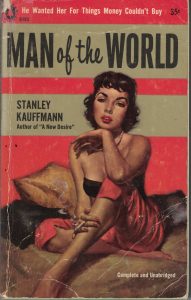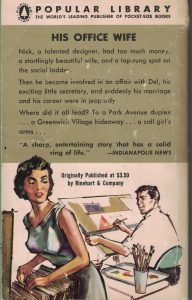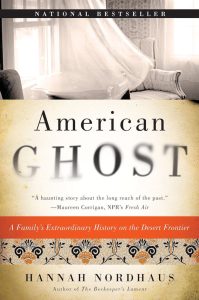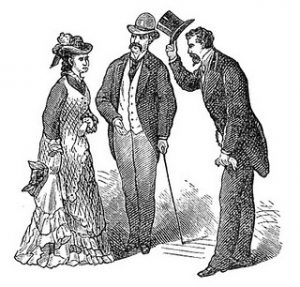While I was thinking about what I should write this week, I began some chicken soup. Boiling chickens are very hard to come by now, and that sent me back in time to four winters ago, when the bushfires kept me indoors and there was no COVID. I was making chicken soup then, too. The post was for BookView Cafe and when they fixed their website, it came down, alas. So… here it is again. It amuses me that despite my whole life changing over four years, I can still be relied upon to make chicken soup in winter. And I still play with time.
Today I’m a bit timewarped. My July and August are basically impossible, so I’m spending a freezing July evening pretending it’s an even more freezing evening in later July or maybe a milder evening in August. I hope to be back to writing a few days before I post later in the year: this means you’ll get timely blogposts then. Everything I write today is influenced by today, even if I try to take my mind into the world of two weeks’ time or a month’s time.
My hands are so cold I can’t even type properly. The heater is on and I’m making chicken porridge and chicken soup and still my hands are cold. Midwinter is midwinter is always, always midwinter.
My own chicken soup is my traditional way of getting through midwinter. I bought a cheap boiling chicken (the label proudly proclaims ‘steamer’ but it knows it’s a chook meant for soup) and I put it in the slow cooker with bone left over from my chicken porridge. That and four litres of water will take me through until this time tomorrow. That’s when I’ll add onion. Saturday I add carrot and take half the soup away. On Sunday I buy parsnip and celery from the market, top up the water by a large amount, and finish the soup off.
The soup I take off will have other things added to it, including tiny dumplings. I bought the wrappers yesterday. I’ve got some vegetables and sesame oil and other nice things and will shred the chicken currently working valiantly to make the soup. I’ll mix all this together for my dumplings. That’s lunch every day next week.
The rest of the soup will be a base for dinner. My next six nights’ worth of dinner, though, is that chicken porridge, with the chicken from it and various vegetable dishes on the side. The chicken is already in a bowl with its sauce, and I’ve made some pickled daikon. It’s a substantial meal, but also not too heavy. Full of garlic and warm tastes.
Just making these things has warmed my fingers up somewhat and I now have a big cup of tea, which makes them all kinds of happy. Happy fingers are a good thing when one has a lot of typing to do. Having most of my food cooked before the week is even better. All I need to worry about is more vegie dishes or salads on Sunday and I will be eating well and staying warm and have every change of meeting my deadlines.
This is Australia in winter. We’re at the start of the financial year and we’re impossibly busy and we turn to food. So many people are talking seriously about food right now, and getting their tax papers ready.
During my busy periods, I usually cook from Thursday to Sunday and then spend a few days finishing everything up. This is what happens in many Aussie households. My days are different because my working week is a bit odd and I have little control over when I get to shop, but a lot of my friends cook for the week ahead rather than cook on the day.
What strikes me is how many Australians cook. We are one of the countries that has farmers’ markets and takes fresh ingredients for granted. This need not have been the case. Our distances our so great and our basic cuisine so English that we could have made quite different food choices.
Not everyone cooks here, but those who don’t can be very apologetic. At functions where we ‘bring a plate’ those who bring a plate of their home cooking are seen as doing the right thing and those who’ve picked something up on the way are not bad people so much as people we look at and hope that this means they were busy rather than that they can’t cook.
I once went to a dinner party where someone had ordered the food in. For casual eating we all do that. We love our food, so we love many kinds of food, so it’s fine to order in for casual eating, but not for formal dinners. The host and hostess didn’t mention what they’d done and everyone was happy for the food was delicious.
The trouble our hosts faced that night is that we all ask questions about food. “What’s in this?” and “How do make that?” MasterChef is one of Australia’s favourite TV programs. I was the first person to cause a problem, for our hosts had no idea if a dish had nuts and I have a severe allergy.
“Try it and see,” suggested the host.
“How far is the hospital?” I asked.
“Twenty minutes.”
“Then I won’t, today. It looks good, though.”
A few minutes later the person opposite me said, “This dessert is terrific. Can you share the recipe?”
The whole table was silent. I looked at the person asking. They had worked out that the food was not home made and that there was a recipe. Their child also had a peanut allergy (we’d chatted about it) and they were making a point… politely.
That was years ago, people are more careful about allergies. I get many fewer dinner invitations because a very few people prefer to avoid the whole issue, which is a funny cultural shift.
The other funny cultural shift is how the tendency for those with income to eat out or send for a home delivery or buy premade food from the supermarket make sense of US movies for us. I’ve noticed that the recipes shared on local fora are more often basic recipes, too, because not as may people know how to cook.
Still, a large percentage of Aussies cook. This still informs our foodways. I am not the only one cooking reassuring food this week to get through midwinter.





 In the annals of 1950s cheesy paperback covers, surely Man of the World should feature somewhere. The sell line (“He wanted her for things money couldn’t buy”) drips innuendo, without actually saying anything. The babe on the cover is sultry. The promise that it’s “complete and unabridged” suggests that there are naughty bits that a more timid publisher might have expurgated. I found nothing that by current standards would be considered naughty.
In the annals of 1950s cheesy paperback covers, surely Man of the World should feature somewhere. The sell line (“He wanted her for things money couldn’t buy”) drips innuendo, without actually saying anything. The babe on the cover is sultry. The promise that it’s “complete and unabridged” suggests that there are naughty bits that a more timid publisher might have expurgated. I found nothing that by current standards would be considered naughty. When my parents met my father was married to a woman named Kit, who was a model, Vogue Magazine beautiful, and apparently a… difficult person. According to the novel, the protagonists (Nick and Delia) have a rather chaste thing going on–she lives with her mother, as my mother did–and they go to the movies or out to dinner. Early on in the book she decides this is going nowhere, and moves to New York. Okay, so far it jibes with family lore. My mother moved to New York and lived in a walk-up over a men’s haberdashery across 6th Avenue from the Women’s House of Detention on 9th Street. My father moved back to New York, having split with the beautiful Kit. He had an apartment-and-studio on 11th Street. Somehow they got back together.
When my parents met my father was married to a woman named Kit, who was a model, Vogue Magazine beautiful, and apparently a… difficult person. According to the novel, the protagonists (Nick and Delia) have a rather chaste thing going on–she lives with her mother, as my mother did–and they go to the movies or out to dinner. Early on in the book she decides this is going nowhere, and moves to New York. Okay, so far it jibes with family lore. My mother moved to New York and lived in a walk-up over a men’s haberdashery across 6th Avenue from the Women’s House of Detention on 9th Street. My father moved back to New York, having split with the beautiful Kit. He had an apartment-and-studio on 11th Street. Somehow they got back together. 
 I love to “talk shop” with other writers. I learn so much about my own process and my weaknesses because it’s always easier to see the flaws – and the strengths! – in someone else’s work. Recently, I had the mirrored experience of serving as a beta reader for another writer’s novel and receiving similar feedback on one of my own. The thematic similarities and differences between the two very early versions of the stories are irrelevant. What fascinated me was that we used dialog in diametrically opposed ways in our story construction: my friend’s rough draft read like a screenplay, and mine had comparatively little conversation. We’ll both end up with balanced manuscripts, but we’ve started from opposite places.
I love to “talk shop” with other writers. I learn so much about my own process and my weaknesses because it’s always easier to see the flaws – and the strengths! – in someone else’s work. Recently, I had the mirrored experience of serving as a beta reader for another writer’s novel and receiving similar feedback on one of my own. The thematic similarities and differences between the two very early versions of the stories are irrelevant. What fascinated me was that we used dialog in diametrically opposed ways in our story construction: my friend’s rough draft read like a screenplay, and mine had comparatively little conversation. We’ll both end up with balanced manuscripts, but we’ve started from opposite places.